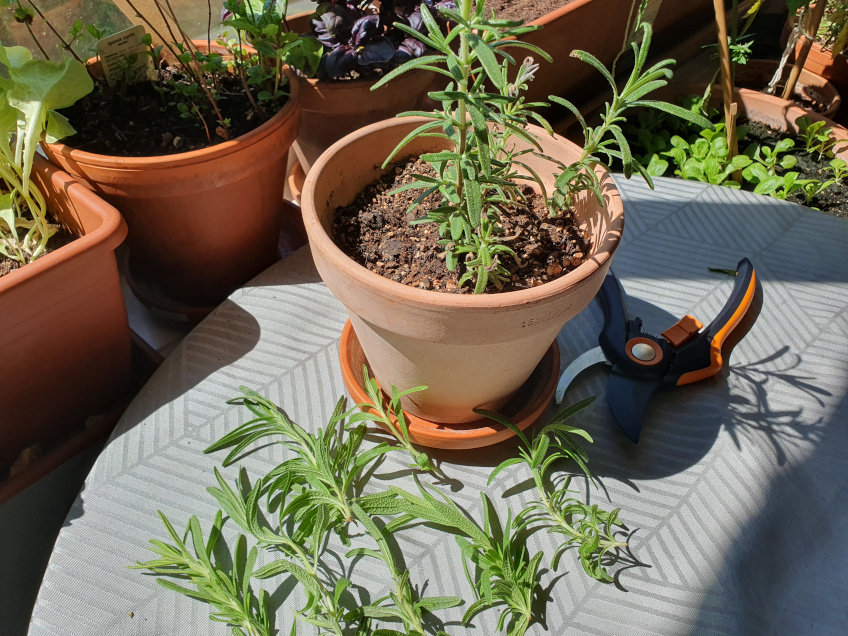
Propagation is the process of growing new plants from a parent plant and is often referred to as plant cloning.
Rosemary is a perfect plant to grow as cuttings, in my experience, since it takes a long time to grow from seed but can grow quickly from a cutting. While I do sometimes grow rosemary from seed, I usually propagate it for this specific reason.
Growing rosemary from cuttings is a simple process that can help you grow a lot more of the tasty herb for free. I went through the process with one of my rosemary plants and took photos so I could show you exactly how to do it.
How to Take Cuttings From a Rosemary Plant (Easiest Way)
Rosemary is a straightforward plant to take cuttings from since it grows as tall, individual stems.
Take cuttings from your rosemary plant by cutting stems about 5-7 inches (about 12-18 cm) from the top. Make sure that the stems you cut are fresh and light green to increase the chance of successful rooting.
You can also often buy rosemary cuttings in supermarkets and other stores and they will usually work perfectly well for growing as new plants.
If you take cuttings from your own rosemary plant, you should use pruning shears to get a clean cut and reduce the risk of potential problems. I use the pruning shears that you see in the photos in this article and I am very happy with them. You can find them here on Amazon.
The most important thing when you take rosemary cuttings is that they are as light green as possible. Light green stems produce roots much faster than brown, woody stems. It can sometimes work with dark and woody stems but the risk that they rot before producing any roots is much higher.
Your cuttings should look similar to mine in this photo.
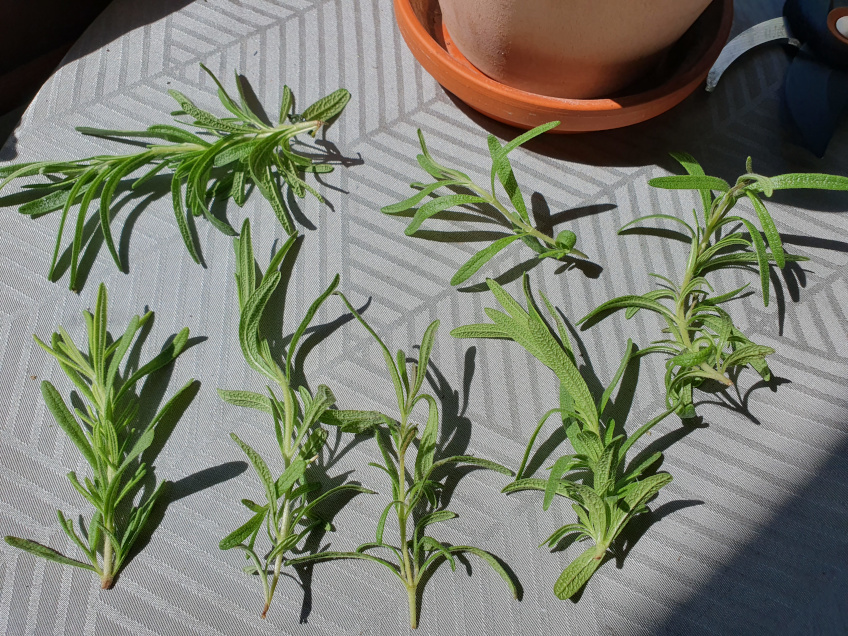
When you have taken all the cuttings you want, it is time to grow them as new plants. I will explain precisely how you do that now.
How to Grow Rosemary Cuttings as New Plants (Propagation)
Rosemary cuttings are easy to grow as new plants and will actually grow much faster than if you started from seed. This is the reason why I almost always start my rosemary from cuttings, although I also find it highly rewarding to grow it from seed. If you want to try that, I have a guide here.
The first step is to remove all leaves from the bottom half of your rosemary cuttings.
After you remove the leaves, the cuttings should look like mine in this photo.
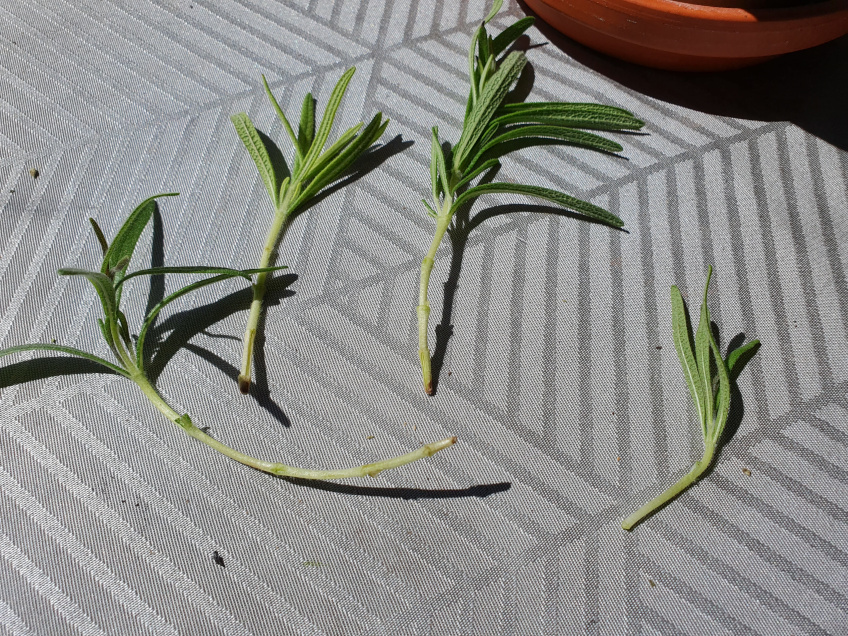
When you have prepared all your cuttings, the next step is to root them, which means to make them produce roots along the part of the stem you remove the leaves from.
With rosemary specifically, you can just put the cuttings directly in the soil by putting the bottom half (the part without leaves) in the soil and leaving the top half (with leaves) above.
In my experience, though, the chance that your cuttings produce roots and start growing is much higher if you root them in water before putting them in the soil. The roots seem to grow much faster that way.
If you want to put your rosemary cuttings directly in the soil now without rooting them in water first, just scroll past the photo below. I will explain what you need to do.
Rooting cuttings in water is easy. Just put your cuttings in a glass and fill it with water until the bottom half of the stems are submerged and the top halves with leaves are above water. Just like I have done in the photo below. Make sure to replace the water every day to avoid bacteria-related issues.
In my experience, it usually takes about a week for the roots to start growing but it depends on how fresh and green the stems are. Older and darker stems take longer to root than newer and lighter stems.
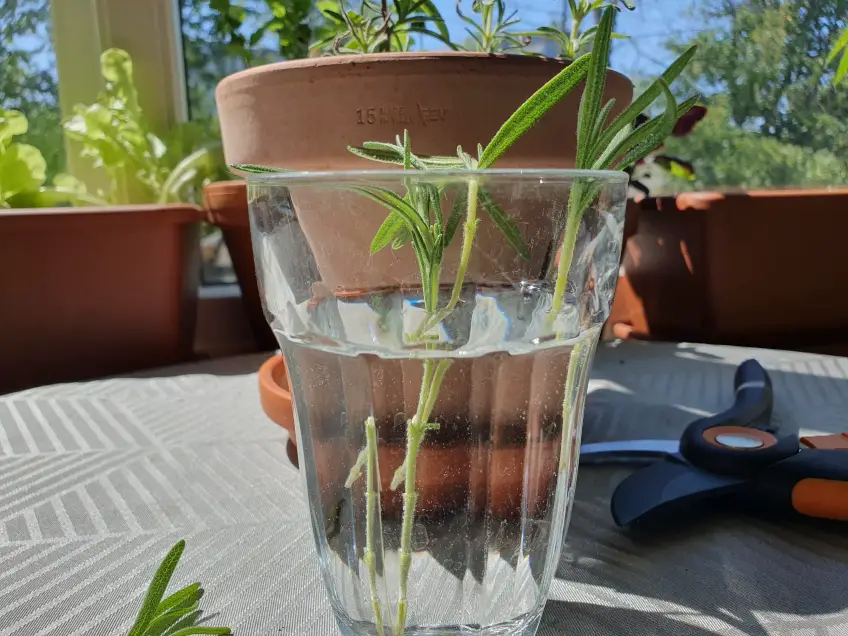
Once your rosemary cuttings have roots, it is time to plant them.
For this, you need a few items.
- Soil
- A pot
- Water
If you want to plant your cuttings directly in the ground, you don’t need a pot or any additional soil. In that case, just find some water. If you haven’t decided if you want to grow them in a pot or in the ground, I have written another article where I cover the advantages and disadvantages of each to help you decide.
I also have a guide to help you find the best place to plant rosemary in case you haven’t decided on a place yet. I wrote that guide after talking to a true gardening expert since I needed advice on where to plant mine at one point. You can find the guide on this link.
It is important that you don’t plant your rosemary in soil that is too rich in nutrients. Instead, use loose, sandy soil that is slightly acidic. If you plant it in the same nutrient-rich soil where you grow basil, tomatoes, cucumbers, and a lot of other popular garden plants, your rosemary leaves will get scorched and start turning yellow and brown starting from the tip of the leaves.
Your new rosemary plants should look like mine in this photo after you plant them.
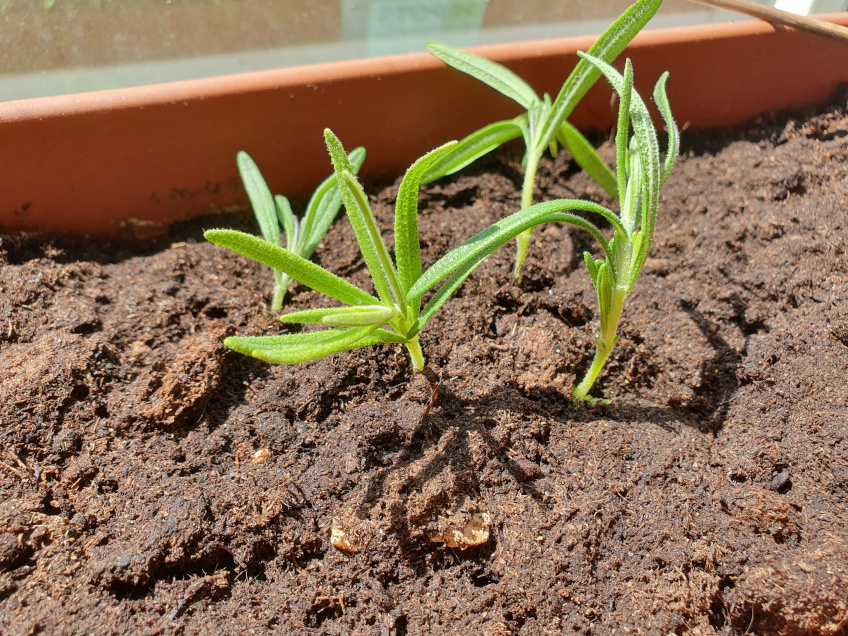
I like to plant 3-4 cuttings near each other like in this photo as it will result in a denser rosemary bush, but you can also plant them individually if you prefer that.
Congratulations! You have successfully planted your rosemary cuttings. All you have left now is to take care of them so that they can become large and productive.
Rosemary doesn’t require much maintenance but it is important to know about its growing conditions to keep it happy. I have a full guide on that on this link, where I explain what you need to know about temperature, sunlight, watering, soil type, and more.

